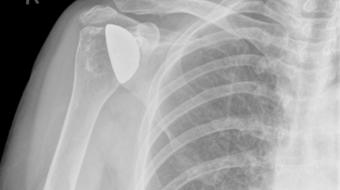Featured Videos
HealthChoicesFirst Patient Handout Shoulder Surgery - Post Operative Information
For patients that have currently undergone an orthopaedic shoulder surgery it is important to follow key instructions from your Orthopeadic Surgeon carefully. To help you in your recovery, the following is a list of commonly asked questions and answers.
- How long do I keep the bandages on after surgery? ANSWER: 3 - 4 days
- Can I shower after surgery? ANSWER: Yes, you may shower as long as you keep the wounds dry. After 7-10 days when the wounds are healed you can then shower without worrying about keeping the wounds dry.
- Should I put ice on the joint after surgery? ANSWER: Yes, you should ice the affected joint regularly, 10 -15 minutes on and then off. You may re-apply the ice once the skin returns to room temperature.
- Should I wear a sling after surgery? ANSWER: Yes, you should wear a sling to protect the shoulder from sudden movements or falling. It should be worn most of the time if there is a risk to the shoulder. If you are in a safe environment where there is no risk to the shoulder then you can remove the sling. However, you should not move the arm without the assistnace of the other arm and not through any pain.
- Should I be doing the pendulum swing? ANSWER: You may begin gentle pendulum swings if it is not uncomfortable for you.
- What exercises do I do? ANSWER: Prior to your first follow up appointment you should begin to move the arm with the other arm only through pain free ranges. You should not lift or reach for anything.
- How often do I do the exercises? ANSWER: You can work on your motion as many times as possible during the day without causing pain or discomfort.
- How soon after surgery can I drive? ANSWER: You are able to drive when you have full control and movement of both arms that will allow you to steer the vehicle rapidly to avoid a collision with another vehicle or pedestrian.
From a torn rotator cuff to impingement from playing sports, you may need shoulder surgery. Find local orthopedic surgeons for info on knee surgery options including knee arthroscopy and knee replacement.
7. Range-of-motion exercises: You’ll do some assisted exercises and exercise at home. Physiotherapists will recommend exercise after virtually any injury. Your local physiotherapist will show you strengthening exercises based on your condition and current health.
8. Functional electrical stimulation: If you’re trying to restore muscular strength, your physiotherapist may recommend electrical stimulation, also called ESTIM. The athletic physical therapist will apply an electrical stimulus to causes contractions of the muscles, hopefully restoring movement and function.
9. Laser: Your physiotherapist may use a low-level laser for muscular or connective tissue injuries to reduce inflammation, pain and muscle fatigue.
10. Kinesio taping: This flexible, colourful tape is applied to the skin to stabilize muscles and joints while you undergo physiotherapy treatment. It will stay in place while you’re doing range-of-motion exercises. If you have a disability, injury or illness, your physiotherapist can help you customize a safe and effective treatment plan.
Talk to your family physician if you'd like more information on physiotherapy treatments.
Visit HealthChoicesFirst.com for more videos and resources on family health.
Talk to your healthcare provider or orthopedic surgeon if you'd like more information on ankle injuries.
Visit HealthChoicesFirst.com for more videos and resources on orthopedics.
Whether you have a foot injury following a car accident or need ankle surgery because of rheumatoid arthritis, an orthopedic surgeon can help. Find local physiotherapist shealth care providers for more information on surgical orthopedic treatments.

